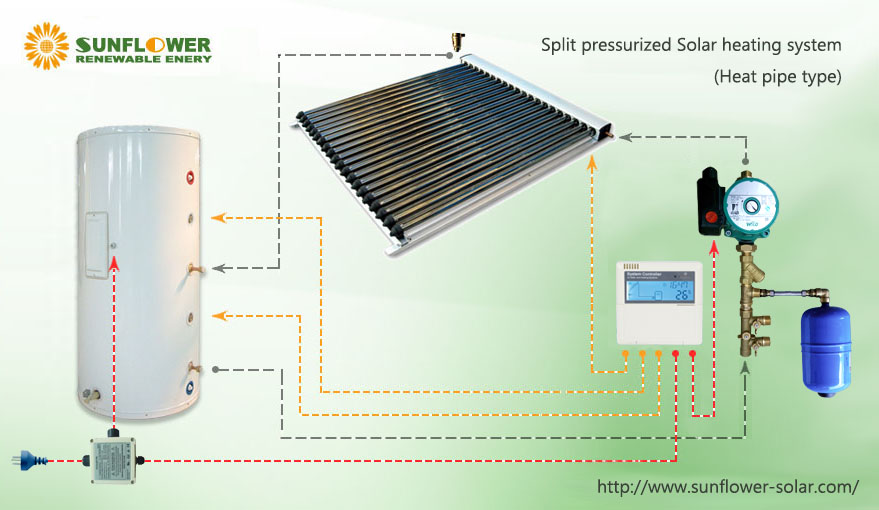Views: 6 Author: Site Editor Publish Time: 2023-05-17 Origin: Site

[Abstract]
In order for the solar collectors in the forced circulation system to operate as designed, they need the correct flow rate. To determine the total flow required by the pump, the number of collectors in parallel can be multiplied by the listed flow required for each collector model. The flow value of the pump in a solar thermal system is always a function of the number of collectors used and the piping method used. This is one of the difficulties in determining the size of pumps and pipes to be used.
[Text]
Pipe Sizing
With the known flow rate and pressure drop, the pump can now be selected for the system. The circulating pumps used in solar water heating systems are usually single-stage centrifugal pumps, which are usually used in standard hydraulic and boiler applications. The pump body is usually made of bronze, stainless steel or cast iron with a composite impeller. The manufacturers of these pumps will publish pump curves for use in verifying the proper specifications of the pump. These curves usually show the head (pressure) capacity on the vertical axis and the flow rate on the horizontal axis, while the curves represent the upper limit of the pump's rating at that flow rate and/or pressure. The calculated flow and pressure loss obtained using the method discussed above constitute the operating point of the pump. The operating point should fall below the curve (bottom and left). Figure here shows the various curves of the circulating pump. Both "open" and "closed" system pumps are suitable for solar water heating systems. The closed system pump is cast iron, and the open system pump is bronze, brass or stainless steel. Please note that 1 PSI is equal to 2.31 feet of water head.
The operating point should always be located comfortably below the pump curve to ensure that the pump has sufficient capacity to meet system requirements. The size of the pump should be increased by at least 20% to allow the use of speed control or isolation valves to properly calibrate the flow in the system. Having a slightly too large pump power is better than not having enough pump power. That being said, the size of the pump should not be too large, lest the pressure and flow rate completely exceed the range required by the relevant system.
There are many other complex issues involving pump specifications that should also be considered, including pump materials, electrical requirements, NPSH and efficiency. For most systems, the methods described above can be used to size pumps and pipes
【Conclusion】
If you use split solar hot water system, it is necessary to pump the water heater in the solar panel around to the hot water tank, swimming pool, or hot tub etc. when the solar panel is hotter than the stored water to be heated.
If you want to know more, please check:
https://www.1stsunflower.com/RS15-6-Solar-Heating-System-Hot-Water-Circulation-Pump-pd75920177.html